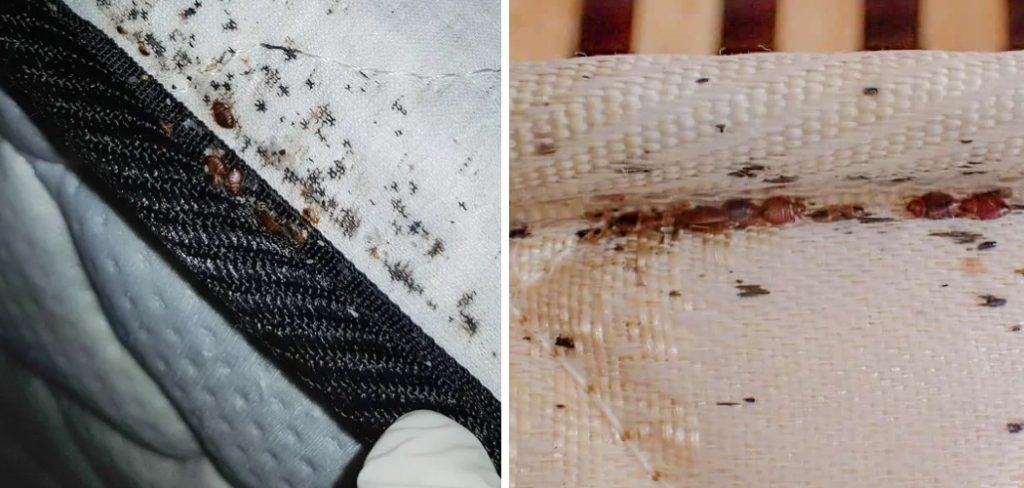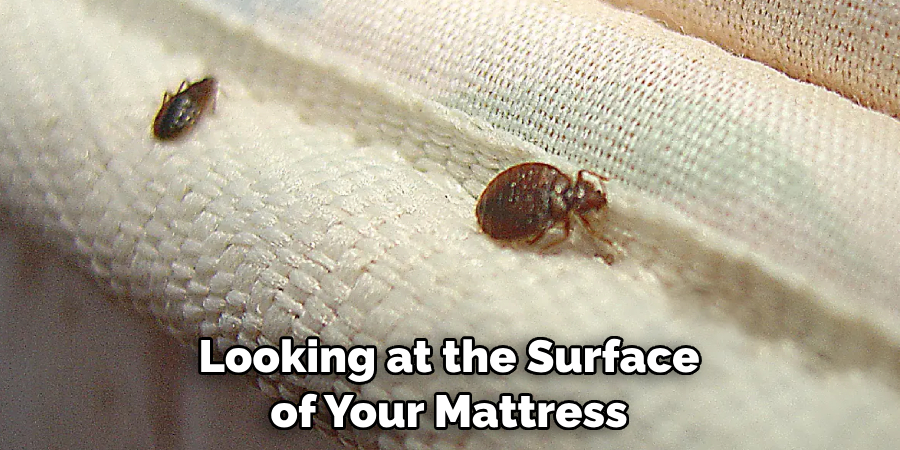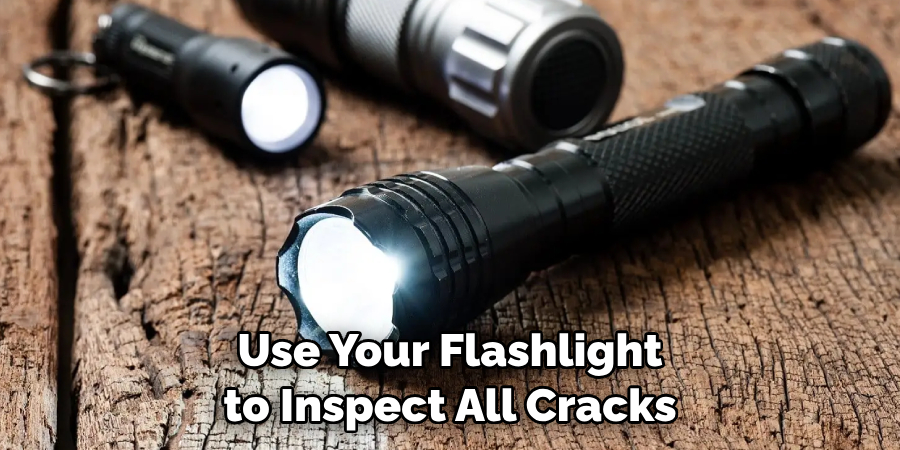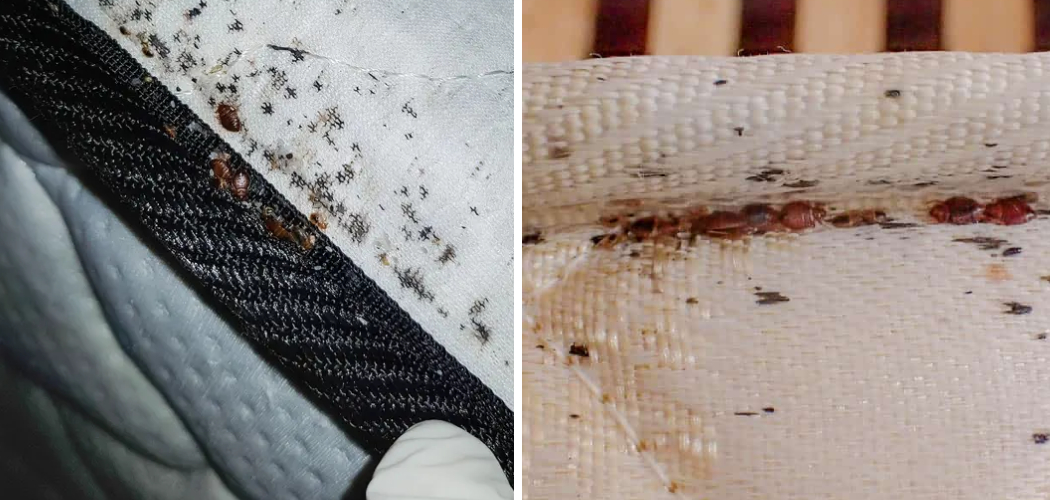Nothing ruins a good night’s sleep like bed bugs. It doesn’t matter how comfortable your mattress is- if it has bed bugs, you won’t get the restful sleep you need. Bed bug infestations can cause a lot of stress and disruption in your life, so it’s important to know the signs of an infestation to identify one before it becomes more serious.

In this blog post, we’ll discuss some of those indicators and how to tell if a mattress has bed bugs within its foam and fabric layers. Keep reading to learn more about recognizing the warning signs of an impending bed bug problem so you can address it promptly!
What Will You Need?
If you suspect that your mattress may be infested with bed bugs, it’s important to prepare yourself for the inspection process. Gather up the following items before you search:
- A bright flashlight
- Some white sheets or towels
- A magnifying glass
- An old toothbrush
- Allergy-proof gloves and a face mask
Once you have the supplies, it’s time to begin inspecting.
10 Easy Steps on How to Tell if a Mattress Has Bed Bugs
Step 1: Preparation
First and foremost, put on your gloves and face mask to prevent any potential allergic reactions. Set down your white sheets or towels around the area you’ll be inspecting – these will protect your floor or furniture and make it easier to spot any bed bugs or their droppings. Have your flashlight, magnifying glass, and toothbrush at the ready.
Step 2: Initial Inspection
Begin your inspection by looking at the surface of your mattress. Turn your flashlight on and carefully examine the mattress for any signs of bed bugs. They are typically the size of an apple seed and can be brown, red, or yellow. Look out for small, round, dark spots (bed bug feces), shed skin, or small blood stains from crushed bugs.

Use your magnifying glass for a closer look and the old toothbrush to dislodge any bugs or eggs that might be hiding in crevices or seams of the mattress. Remember, bed bugs are excellent at hiding, so check every nook and corner thoroughly.
Step 3: Check the Bedding and Surrounding Area
After examining the mattress surface, extend your inspection to the bedding and the surrounding area. Bed bugs can often be found in pillowcases, sheets, and blankets. Look for signs of fecal spots, shed skin or blood stains. Remember to check the seams and folds where they might hide.
Step 4: Inspect The Bed Frame and Headboard
Bed bugs don’t limit themselves to the mattress and bedding; they can also reside in the bed frame and headboard. Using your flashlight, inspect all crevices and joints of the bed frame. Look for the usual signs – tiny black spots, shed skins, or the bugs themselves. Pay special attention to the corners, cracks, and crevices. Don’t forget to inspect the back of the headboard, as bed bugs often hide in such out-of-sight places.
Step 5: Examine the Box Spring
The box spring, being dark and secluded, often provides a perfect hiding spot for bed bugs. Remove the dust cover at the bottom of the box spring and inspect the inner cavities with your flashlight. Look for the familiar signs of bed bugs: the insects themselves, small black spots, shed skins, or eggs.
Inspect the wooden frames and staples where bed bugs could be hiding. It is a tedious process, but remember, thoroughness is crucial when identifying a bed bug infestation.
Step 6: Inspect The Surrounding Furniture
Bed bugs aren’t restricted to just your bed. They can also infest nearby furniture, particularly those made of wood or fabric. This includes nightstands, dressers, chairs, or even couches.

Use your flashlight to inspect all cracks and crevices in the furniture carefully. Look out for bed bug feces, eggs, shed skin, or the bugs themselves. Ensure to check inside drawers and under the furniture as well. Once again, thoroughness is key in preventing a bed bug infestation from escalating.
Step 7: Check the Carpet and Rugs
Remember to inspect the carpet and any rugs in the room, especially those close to your bed. Bed bugs can easily hide in the fibers. Use your flashlight to examine the carpet for signs of bed bugs. Look closely along the edge of the wall and even under the carpet if possible.
If you have rugs, lift them and check the undersides. The presence of small, dark spots (fecal matter), shed skins, or the bugs themselves can indicate an infestation.
Step 8: Inspect Walls and Wall Hangings
Bed bugs can also find their way into walls and wall hangings, particularly in cracks, crevices, or under loose wallpaper. Use your flashlight to inspect any wall hangings, such as pictures, posters, or clocks, for signs of bed bugs. Look for the tell-tale signs: small, dark spots (bed bug feces), shed bug skin, or the bugs themselves.
Inspect these items and the room’s perimeter, including baseboards, window sills, and door frames. It’s essential to be as thorough as possible to catch a potential infestation early.
Step 9: Inspect Closet and Clothes
Bed bugs can often travel on clothing or hide in closets. Take the time to inspect your closet carefully. Begin by examining any hanging clothes, paying close attention to seams and folds. Remove and examine each piece individually for clothes stored in drawers or bins.
Also, pay attention to shoes, hats, and other accessories. Once you’ve inspected your clothes, move on to the closet’s interior. Use your flashlight to look for signs of bed bugs on the walls, shelves, floor, and even the ceiling. Remember to look for the tell-tale signs: small, dark spots (bed bug feces), shed skin, or the bugs themselves. It’s a painstaking process, but necessary for a thorough inspection.

Step 10: Take Action
If, after your thorough inspection, you’ve identified signs of a bed bug infestation, it’s time to take action. First, don’t panic. Bed bugs can be controlled with proper treatment. Contact a professional pest control company, preferably one with experience in bed bug removal.
While waiting for professional help, avoid moving items from the infested area to other parts of your home to prevent further spread. Regularly vacuum and clean the affected areas, and wash all sheets, blankets, and clothes in hot water.
Following these steps, you can accurately tell if a mattress has bed bugs and take the necessary action to prevent an infestation from worsening. Bed bug prevention requires diligence and regular inspection – but with the right know-how, you can effectively protect your home from these unwanted pests.
5 Additional Tips and Tricks
- Regular Inspection: Bed bugs are crafty creatures that often hide in the seams, tufts, and crevices of mattresses, box springs, bed frames, and headboards. To identify their presence, take a flashlight and closely examine these areas for tiny black spots (bed bug feces), shed skins, or the bugs themselves. Remember, they are typically about the size of an apple seed.
- Bed Bug Bites: If you’re waking up with itchy red welts or a rash that didn’t exist when you went to sleep, you may have bed bugs. These pests tend to feed at night and often target areas of skin that are exposed while you sleep.
- Blood Stains: Another sign of bed bugs is tiny blood stains on your sheets or pillowcases. These spots can occur when the bug is crushed after feeding or if it drops some of its meal while moving to its hiding spot.
- Unpleasant Odor: A distinctive, musty odor is another sign of a potential bed bug infestation. This scent comes from the glands of the bugs and tends to be stronger when an infestation is severe.
- Cast-off Skins: As bed bugs mature, they will molt and leave behind their shed skins – clear, empty exoskeletons. These skins, such as mattress seams and crevices, are generally found around their hiding spots.
5 Things You Should Avoid
- Ignoring the Signs: Taking immediate action is important if you believe your mattress may be infested with bed bugs. Ignoring the issue can worsen it, as these pests reproduce quickly and spread rapidly throughout your home.
- Using Insecticides: While insecticides are effective for treating other pests, they won’t eliminate bed bugs. These products are designed to target something other than these insects and may even worsen the problem by driving them into harder-to-reach areas of your home.
- Reusing Mattress Covers: Bed bug mattress covers are incredibly effective for containing a potential infestation. However, you should never reuse one from a previous infestation.
- Throwing Away Your Mattress: While it may be tempting just to throw away your mattress if you find bed bugs, this isn’t the most effective solution. Bed bugs can survive in other areas of the home and simply move to another one once their source is gone.
- Using Home Remedies: Some people may think that they can get rid of bed bugs with home remedies like rubbing alcohol, bleach, or diatomaceous earth.

Avoiding bed bugs begins with maintaining cleanliness and taking preventative measures in your daily routine.
Conclusion
Regularly checking your mattress for bed bugs is important to avoid an infestation. The signs of bed bugs can be subtle and easily overlooked, but by looking for a few key indicators, you will be well equipped to detect and deal with any issues before they become a major problem.
Though it may take some time and research, understanding how to tell if a mattress has bed bugs will help provide you with the peace of mind that you and your family are protected from these unwelcome visitors.
Lastly, partnering with a professional pest removal service at the first sign of trouble can be invaluable in banishing these pests from your home once and for all. Thanks for reading!
